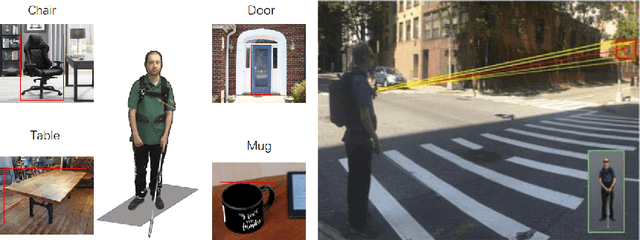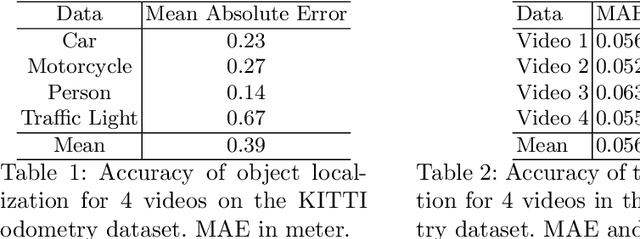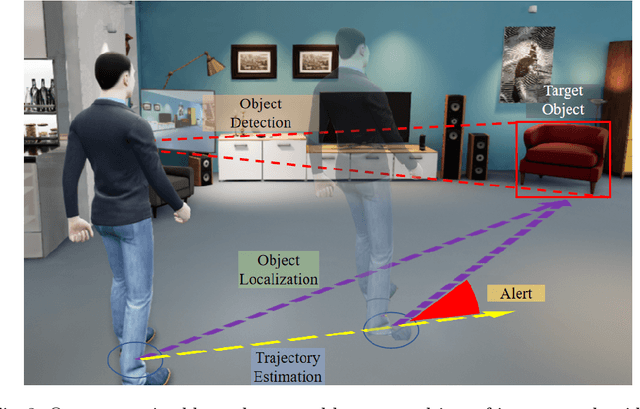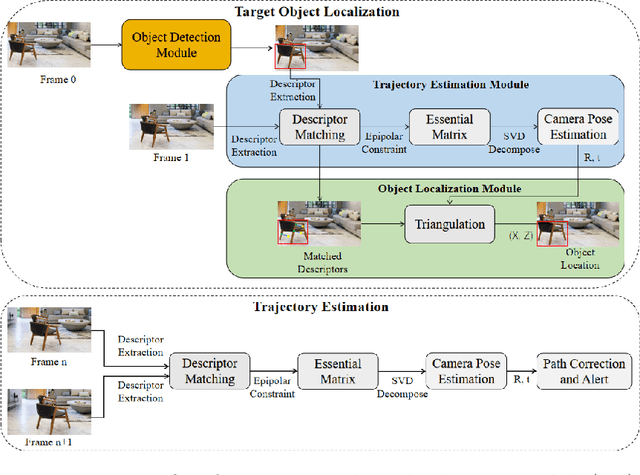Junchi Feng
Robust Computer-Vision based Construction Site Detection for Assistive-Technology Applications
Mar 06, 2025Abstract:Navigating urban environments poses significant challenges for people with disabilities, particularly those with blindness and low vision. Environments with dynamic and unpredictable elements like construction sites are especially challenging. Construction sites introduce hazards like uneven surfaces, obstructive barriers, hazardous materials, and excessive noise, and they can alter routing, complicating safe mobility. Existing assistive technologies are limited, as navigation apps do not account for construction sites during trip planning, and detection tools that attempt hazard recognition struggle to address the extreme variability of construction paraphernalia. This study introduces a novel computer vision-based system that integrates open-vocabulary object detection, a YOLO-based scaffolding-pole detection model, and an optical character recognition (OCR) module to comprehensively identify and interpret construction site elements for assistive navigation. In static testing across seven construction sites, the system achieved an overall accuracy of 88.56\%, reliably detecting objects from 2m to 10m within a 0$^\circ$ -- 75$^\circ$ angular offset. At closer distances (2--4m), the detection rate was 100\% at all tested angles. At
Detect and Approach: Close-Range Navigation Support for People with Blindness and Low Vision
Aug 17, 2022



Abstract:People with blindness and low vision (pBLV) experience significant challenges when locating final destinations or targeting specific objects in unfamiliar environments. Furthermore, besides initially locating and orienting oneself to a target object, approaching the final target from one's present position is often frustrating and challenging, especially when one drifts away from the initial planned path to avoid obstacles. In this paper, we develop a novel wearable navigation solution to provide real-time guidance for a user to approach a target object of interest efficiently and effectively in unfamiliar environments. Our system contains two key visual computing functions: initial target object localization in 3D and continuous estimation of the user's trajectory, both based on the 2D video captured by a low-cost monocular camera mounted on in front of the chest of the user. These functions enable the system to suggest an initial navigation path, continuously update the path as the user moves, and offer timely recommendation about the correction of the user's path. Our experiments demonstrate that our system is able to operate with an error of less than 0.5 meter both outdoor and indoor. The system is entirely vision-based and does not need other sensors for navigation, and the computation can be run with the Jetson processor in the wearable system to facilitate real-time navigation assistance.
 Add to Chrome
Add to Chrome Add to Firefox
Add to Firefox Add to Edge
Add to Edge